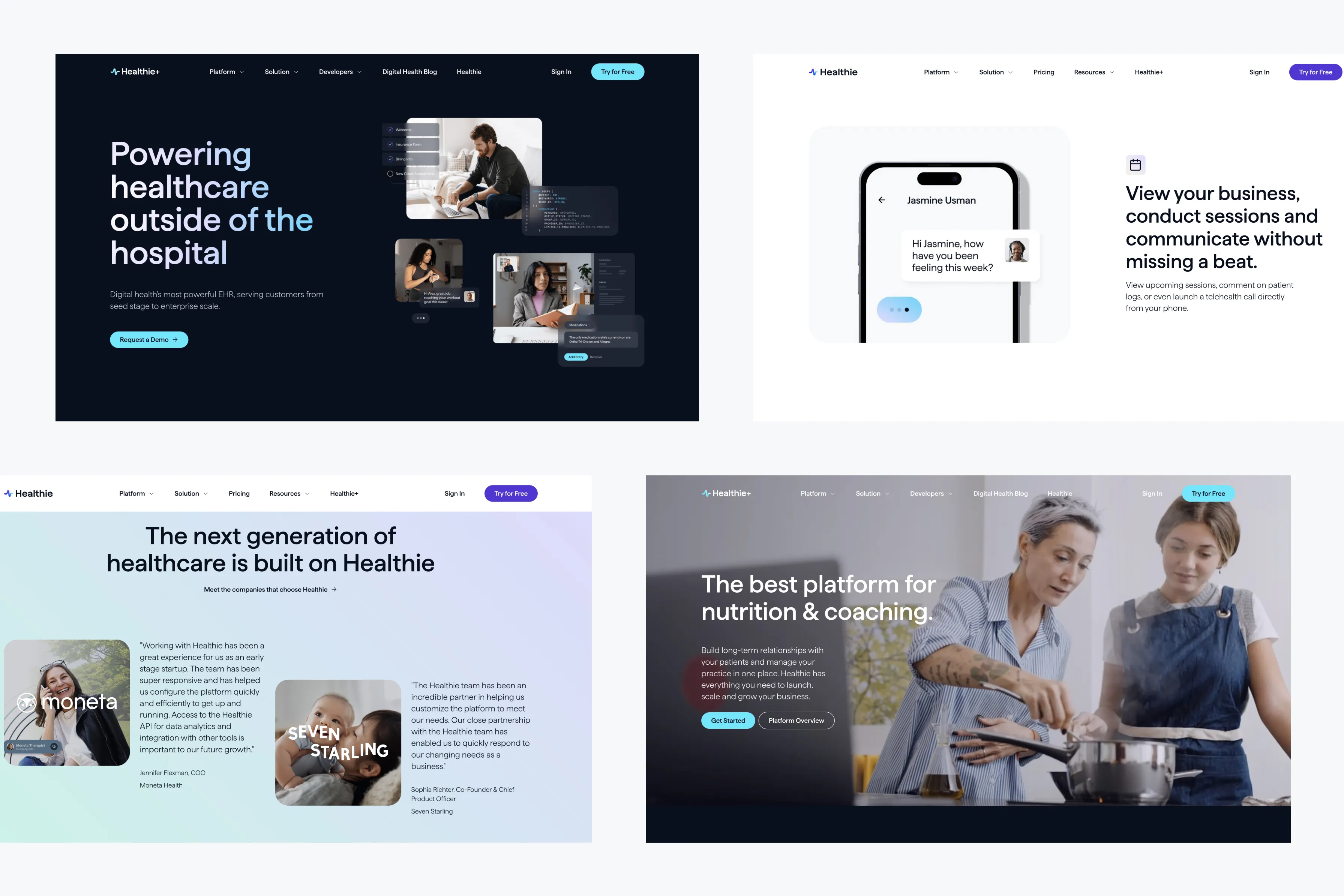UX/UI Design Principles 2024 | How to Create User-Centered Websites

In today’s digital landscape, creating a website that resonates with users is more important than ever. A user-centered approach to UX/UI design ensures that your website not only looks appealing but also functions intuitively, providing a seamless experience for visitors. This blog explores the fundamental UX/UI design principles that will help you create user-centered websites in 2024.
1. Empathy in Design
Empathy is the cornerstone of user-centered design. Understanding your users’ needs, behaviors, and pain points is crucial to creating a website that truly serves them. By putting yourself in your users’ shoes, you can design experiences that resonate, making it easier for users to achieve their goals.
How to Implement:
- User Research: Conduct surveys, interviews, and usability tests to gather insights into what your users need and expect from your website.
- User Personas: Develop detailed user personas that represent your target audience, helping guide design decisions that prioritize user needs.
- Journey Mapping: Create user journey maps to visualize the steps users take on your website, identifying areas where the experience can be improved.
2. Usability and Simplicity
Usability is a key principle in UX design. A website that is easy to navigate and understand reduces user frustration and increases satisfaction. Simplicity in design, paired with intuitive navigation, ensures that users can find what they’re looking for quickly and efficiently.
How to Implement:
- Clear Navigation: Organize content logically and provide clear, straightforward navigation menus. Use familiar patterns that users recognize.
- Minimalism: Avoid clutter by focusing on essential elements. White space can help highlight important content and make your website more visually appealing.
- Consistent Design: Ensure that your design is consistent across all pages, including colors, fonts, and button styles, to create a cohesive user experience.
3. Effective Visual Hierarchy
Visual hierarchy is the arrangement of elements in a way that guides users’ attention. By using size, color, contrast, and spacing effectively, you can direct users to the most important parts of your website and help them understand the content quickly.
How to Implement:
- Prioritize Content: Determine the most important information on each page and make it stand out using larger fonts, bold colors, or prominent placement.
- Use Contrast: Employ contrast to differentiate between different sections and highlight key areas, such as calls to action or important messages.
- Consistent Layouts: Maintain a consistent layout across your site to help users anticipate where they will find information, reducing cognitive load.
4. Accessibility
Designing for accessibility means ensuring that your website can be used by as many people as possible, including those with disabilities. Accessibility is not just a legal requirement in many regions; it’s also a crucial aspect of creating an inclusive user experience. This is also known as equity-based design.
How to Implement:
- Alt Text for Images: Provide descriptive alt text for all images to assist users who rely on screen readers.
- Keyboard Navigation: Ensure your website is fully navigable using only a keyboard, catering to users with mobility impairments.
- Contrast Ratios: Use high contrast between text and background colors to improve readability for users with visual impairments.
5. Responsive and Adaptive Design
With users accessing websites on a variety of devices, from smartphones to desktops, responsive and adaptive design is essential. Your website should provide a seamless experience across all screen sizes, ensuring that content is easily accessible no matter how it’s viewed.
How to Implement:
- Flexible Grids: Use flexible grid layouts that adjust based on screen size, ensuring that your design remains intact on different devices.
- Media Queries: Implement media queries in your CSS to apply different styles depending on the device’s characteristics, such as screen width or resolution.
- Touch-Friendly Design: Ensure buttons and interactive elements are large enough to be easily tapped on touchscreens.
6. Feedback and Interaction
Users appreciate knowing that their actions on a website are being recognized. Providing feedback through micro-interactions—like button animations, loading indicators, or confirmation messages—enhances the user experience by making interactions more engaging and intuitive.
How to Implement:
- Button States: Design buttons with clear states (e.g., hover, active) to show users when an action is being taken.
- Loading Indicators: Use loading indicators to reassure users that their request is being processed, reducing frustration during wait times.
- Confirmation Messages: Provide clear confirmation messages after a user completes an action, such as submitting a form, to confirm that their input was received successfully.
7. Iterative Design and Testing
The best websites are the result of continuous improvement. An iterative design process, where designs are tested and refined based on user feedback, ensures that your website evolves to meet user needs effectively.
How to Implement:
- A/B Testing: Conduct A/B tests to compare different design variations and determine which performs better in terms of user engagement and conversions.
- User Feedback: Gather user feedback regularly through surveys, usability tests, and analytics to identify pain points and areas for improvement.
- Agile Methodology: Adopt an agile approach to web design, allowing for rapid iterations and continuous enhancements based on real user data.
Conclusion
In 2024, creating a user-centered website is more critical than ever. By applying these UX/UI design principles—empathy, usability, visual hierarchy, accessibility, responsive design, feedback mechanisms, and iterative testing—you can ensure that your website not only meets but exceeds user expectations. Remember, the ultimate goal of UX/UI design is to create a seamless, intuitive experience that delights users and keeps them coming back.




















